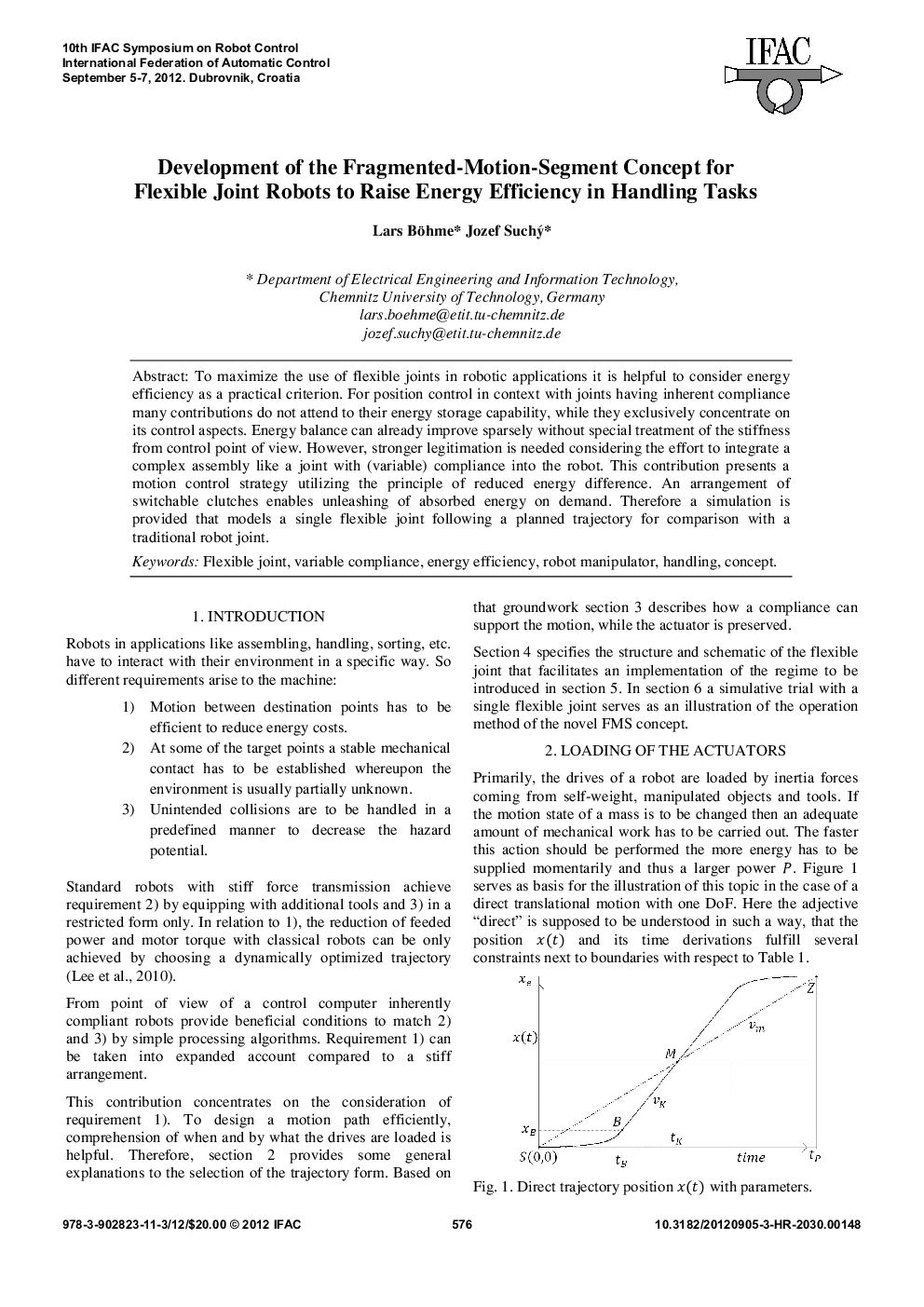| Article ID | Journal | Published Year | Pages | File Type |
|---|---|---|---|---|
| 717484 | IFAC Proceedings Volumes | 2012 | 8 Pages |
To maximize the use of flexible joints in robotic applications it is helpful to consider energy efficiency as a practical criterion. For position control in context with joints having inherent compliance many contributions do not attend to their energy storage capability, while they exclusively concentrate on its control aspects. Energy balance can already improve sparsely without special treatment of the stiffness from control point of view. However, stronger legitimation is needed considering the effort to integrate a complex assembly like a joint with (variable) compliance into the robot. This contribution presents a motion control strategy utilizing the principle of reduced energy difference. An arrangement of switchable clutches enables unleashing of absorbed energy on demand. Therefore a simulation is provided that models a single flexible joint following a planned trajectory for comparison with a traditional robot joint.
